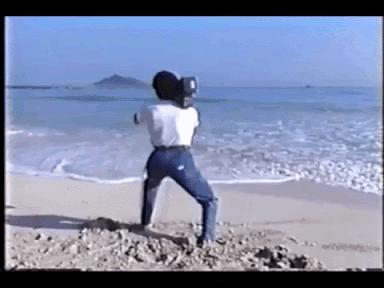This Just In: People Like Watching Videos on the Internet
This past week I was asked to lead a workshop with the members of Wines of British Columbia about Video's role in Marketing, and at first, I had a tough time coming up with something original to share with the group.
We've all watched as video has crept into every corner of our digital lives, starting with YouTube embeds on websites and growing into Instagram Stories, TikTok, and e-commerce customer service touchpoints. But what is there left to say about video's role in marketing – especially as it relates to small and medium-sized businesses?
Rather than thinking about video as a standalone tactic, I started by considering why we use video in the first place. In nearly every case, video is simply a way to convey a message across one of three different types of media: earned, owned, or paid.
So I dug in and looked for use cases or data that could help to shed some light on what role video could play not in a brand's overall marketing strategy, but instead in each of the ways that brands communicate with their audiences. The results were shocking, but not surprising:
EARNED MEDIA
The goal of earned media is to put a message out into the world in a way that's so compelling that people want to pass it on for us, thereby earning us access to new audiences. According to G2.com, social video will generate 1200% more sharing than text and image-based content combined. That doesn't tell us that our content is definitely going to land in Fast Company, but there is a dramatically better chance that a message will reach a broader audience by using video.
OWNED MEDIA
Rather than ask for permission to communicate with an audience, a lot of brands would rather have direct contact, and they invest a lot of resources in order to earn that trust. A throwback example is the Michelin Guide – where every other tire company focused on TV and full-page ads, the Michelin team printed a restaurant guide that people looked forward to and passed on to their friends. Today, owned media typically takes the form of podcasts, blogs, and email marketing.
All of the work we do to build an owned media channel only pays off when we deliver something that keeps people's attention and builds their understanding, trust, or loyalty in our brands. So, it smacked me in the face when I discovered that a study by Invisia found that viewers retain 9 times as much information from video as they do from reading text for the same period of time.
PAID MEDIA
I've been known to be one of those people who roll their eyes when people instinctively recommend video for bottom-of-funnel marketing. The logic feels flawed to me – when it comes to satisfying a need, wouldn't we want to get out of their way and make it as simple as possible to get to the shopping cart?
Even when it comes to paid media and bottom-of-funnel, video showed a dramatic improvement in performance. According to Vidyard, landing pages that incorporate video have a 34% higher average conversion rate, and if we can get people to watch user-generated video, Wordstream tells us that they're 184% more likely to make a purchase.
SO WHAT?
It could be easy to look at those stats and blindly toss our content budgets at a videographer, but of course, reality is much more nuanced than what appears on a spreadsheet. A lot of brand videos are terrible and, without stats to back it up, I'll suggest that there are more than a few that are doing more harm than good.
So, my recommendation to the Wine BC audience, and to you, is to look at your audience and the media that you've chosen to communicate with them, and ask yourself the following three questions:
What are you trying to achieve?
Why do people love your brand?
What is your advantage?
Once you're able to answer those three questions in a compelling way, then we'll be able to make the most of video as a marketing opportunity.
If you'd like to learn more, you can watch the entire recording of my virtual presentation to Wines of British Columbia here.
Written by Conner Galway, Junction Consulting.

